笔记来源于 动力节点springboot
Javaconfig
xml方式
在创建模块时,idea2022新版选择internal即可:
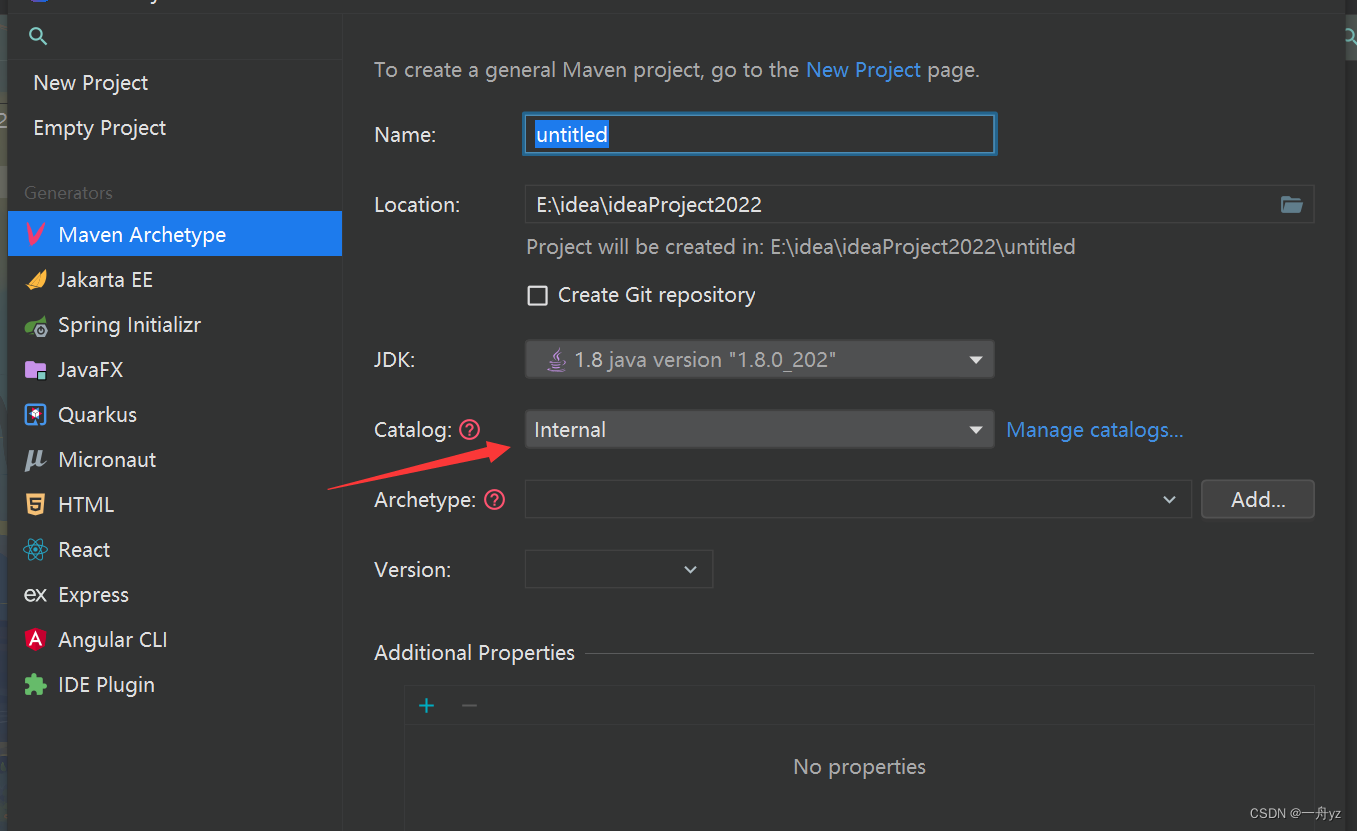
pom.xml文件
<project xmlns="http://maven.apache.org/POM/4.0.0" xmlns:xsi="http://www.w3.org/2001/XMLSchema-instance"
xsi:schemaLocation="http://maven.apache.org/POM/4.0.0 http://maven.apache.org/xsd/maven-4.0.0.xsd">
<modelVersion>4.0.0</modelVersion>
<groupId>cn.ysk</groupId>
<artifactId>springboot-pre</artifactId>
<version>1.0-SNAPSHOT</version>
<packaging>jar</packaging>
<name>springboot-pre</name>
<url>http://maven.apache.org</url>
<properties>
<project.build.sourceEncoding>UTF-8</project.build.sourceEncoding>
</properties>
<dependencies>
<dependency>
<groupId>junit</groupId>
<artifactId>junit</artifactId>
<version>4.13.2</version>
<scope>test</scope>
</dependency>
<dependency>
<groupId>org.springframework</groupId>
<artifactId>spring-context</artifactId>
<version>5.3.19</version>
</dependency>
</dependencies>
<build>
<plugins>
<!-- 编译插件 -->
<plugin>
<artifactId>maven-compiler-plugin</artifactId>
<!-- 插件的版本 -->
<version>3.5.1</version>
<!-- 编译级别 -->
<configuration>
<source>1.8</source>
<target>1.8</target>
<!-- 编码格式 -->
<encoding>UTF-8</encoding>
</configuration>
</plugin>
</plugins>
</build>
</project>
创建学生类:
public class Student {
private Integer id;
private String name;
private Integer age;
……
resource目录下创建beans.xml文件:
<?xml version="1.0" encoding="UTF-8"?>
<beans xmlns="http://www.springframework.org/schema/beans"
xmlns:xsi="http://www.w3.org/2001/XMLSchema-instance"
xsi:schemaLocation="http://www.springframework.org/schema/beans http://www.springframework.org/schema/beans/spring-beans.xsd">
<bean id="myStudent" class="cn.ysk.vo.Student">
<property name="id" value="1001" />
<property name="name" value="李强国" />
<property name="age" value="20" />
</bean>
</beans>
测试:
@Test
public void test01() {
String config = "ba01/applicationContext.xml";
ApplicationContext ac = new ClassPathXmlApplicationContext(config);
Student student = (Student) ac.getBean("student");
System.out.println(student);
}
//Student{name='zhangsan', age=22, school=School{name='清华', address='北京'}}
JavaConfig 配置容器
JavaConfig: 使用java类作为xml配置文件的替代, 是配置spring容器的纯java的方式。 在这个java 类这可以创建java对象,把对象放入spring容器中
使用两个注解:
- @Configuration : 放在一个类的上面,表示这个类是作为配置文件使用的。(这个类就相当于之前的xml了,从而好多注解也是在这个类上面添加)
- @Bean:声明对象,把对象注入到容器中。
创建配置类(等同于 xml 配置文件)
/**
* Configuration:表示当前类是作为配置文件使用的。 就是用来配置容器的
* 位置:在类的上面
* <p>
* SpringConfig这个类就相当于beans.xml
*/
@Configuration
public class SpringConfig {
/**
* 创建方法,方法的返回值是对象。 在方法的上面加入@Bean
* 方法的返回值对象就注入到容器中。
* <p>
* 1.2 @ImporResource
*
* @ImportResource 作用导入其他的xml配置文件, 等于 在xml
* 例如:
* @Bean: 把对象注入到spring容器中。 作用相当于<bean>
* <p>
* 位置:方法的上面
* <p>
* 说明:@Bean,不指定对象的名称,默认是方法名是 id
*/
@Bean
public Student createStudent() {
Student s1 = new Student();
s1.setName("张三");
s1.setAge(26);
s1.setId(111);
return s1;
}
/***
* 指定对象在容器中的名称(指定<bean>的id属性)
* @Bean的name属性,指定对象的名称(id)
*/
@Bean(name = "lisiStudent")
public Student makeStudent() {
Student s2 = new Student();
s2.setName("李四");
s2.setAge(22);
s2.setId(222);
return s2;
}
测试:
@Test
public void test02(){
//没有 xml 配置文件,使用 java 类代替 xml 配置文件 的作用
ApplicationContext ctx = new
AnnotationConfigApplicationContext(SpringConfig.class);
Student student = (Student) ctx.getBean("createStudent");
System.out.println("student==="+student);
}
@ImporResource
@ImportResource 作用导入其他的xml配置文件, 等于 在xml中:
<import resources="其他配置文件"/>
例如:
@Configuration
@ImportResource(value ={
"classpath:applicationContext.xml","classpath:beans.xml"})
public class SpringConfig {
}
@PropertyResource
@PropertyResource 是读取 properties 属性配置文件
在 resources 目录下创建 config.properties:
tiger.name=东北老虎
tiger.age=6
创建数据类 Tiger:
@Component("tiger")
public class Tiger {
@Value("${tiger.name}")
private String name;
@Value("${tiger.age}")
private Integer age;
@Override
public String toString() {
return "Tiger{" +
"name='" + name + '\'' +
", age=" + age +
'}';
}
}
修改config类:
@Configuration
@PropertySource(value = "classpath:config.properties")
@ComponentScan(value = "cn.ysk.vo")
public class SystemConfig {
//使用@Bean 声明 bean
}
SpringBoot
特性
SpringBoot 相当于 不需要配置文件的Spring+SpringMVC。 常用的框架和第三方库都已经 配置好了。
- 简化 Spring 应用程序的创建和开发过程
- 提供了starter起步依赖,简化应用的配置。
- 直接使用 java main 方法启动内嵌的 Tomcat 服务器运行 Spring Boot 程序,无需部署 war 包文件
- 提供了健康检查, 统计,外部化配置
- 不用生成代码, 不用使用xml做配置
四大核心:
1)自动配置 -Auto Configuration
2)起步依赖-Starter Dependency
3)命令行界面-Spring Boot CLI
4)运行监控-Actuator
创建springboot项目
第一种方式
第1、2种方式都需要联网!
使用 spring boot 提供的初始化器。 向导的方式,完成 spring boot 项目的创建: 使用 方便。
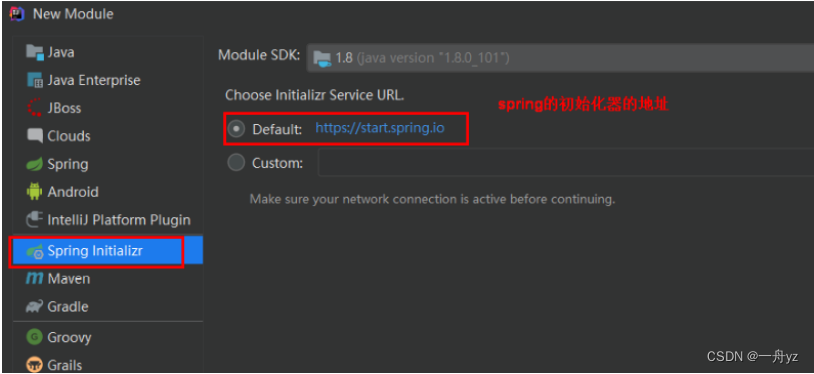
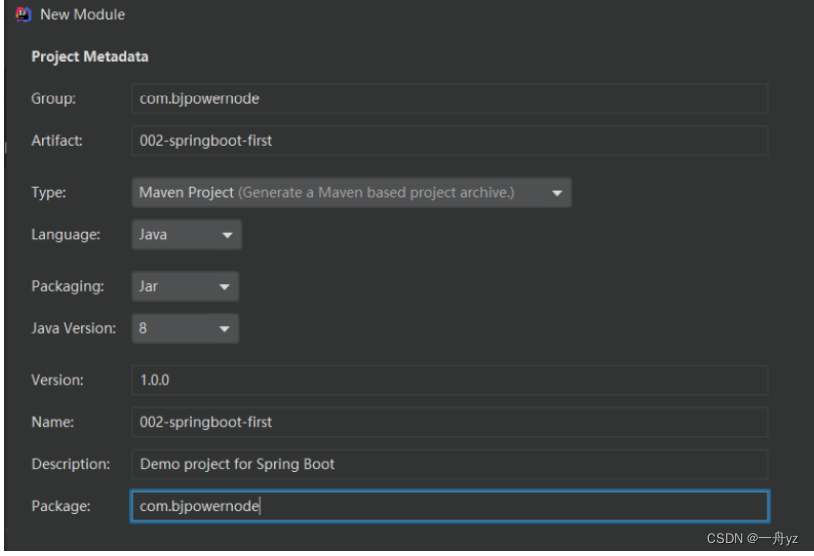
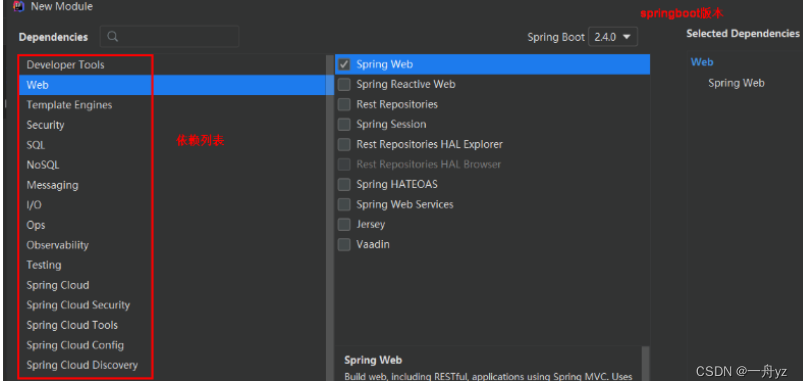
目录结构:
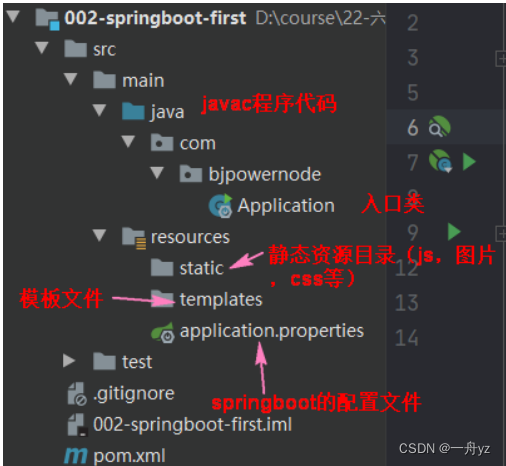
起步依赖:

第二种方式
国内地址: https://start.springboot.io
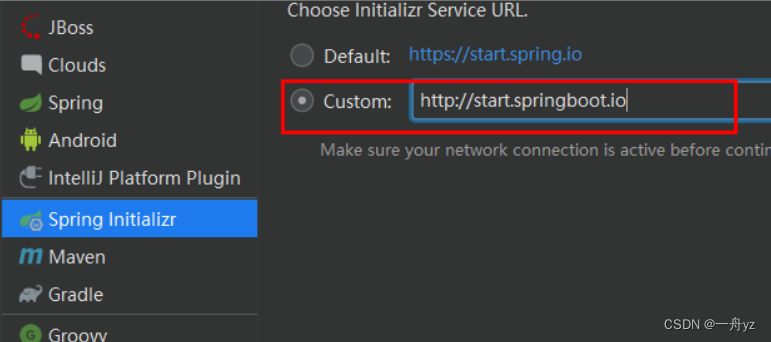
其余同上……
第三种方式-maven
直接创建maven项目
pom.xml文件:
加入:
<parent>
<groupId>org.springframework.boot</groupId>
<artifactId>spring-boot-starter-parent</artifactId>
<version>2.4.2</version>
<relativePath/> <!-- lookup parent from repository -->
</parent>
<dependencies>
<dependency>
<groupId>org.springframework.boot</groupId>
<artifactId>spring-boot-starter-web</artifactId>
</dependency>
<dependency>
<groupId>org.springframework.boot</groupId>
<artifactId>spring-boot-starter-test</artifactId>
<scope>test</scope>
</dependency>
</dependencies>
<build>
<plugins>
<plugin>
<groupId>org.springframework.boot</groupId>
<artifactId>spring-boot-maven-plugin</artifactId>
</plugin>
</plugins>
</build>
手动创建:
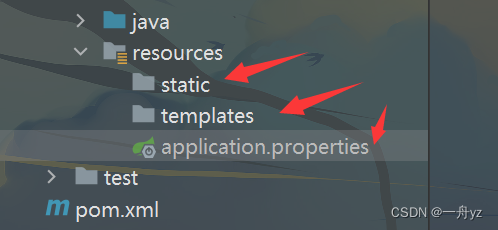
案例
采用第二种方式创建项目:
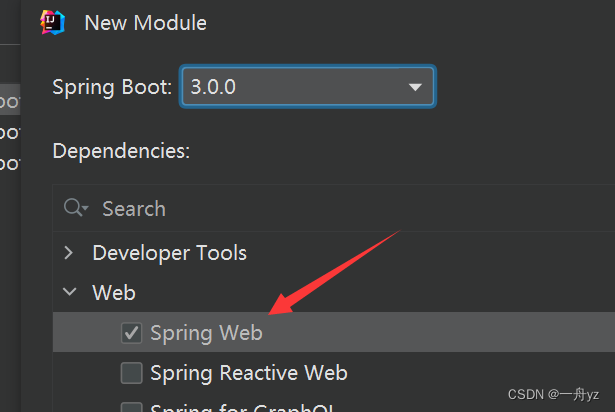
@Controller
public class HelloSpringBoot {
@RequestMapping("/hello")
@ResponseBody
public String helloSpringBoot(){
return "欢迎使用SpringBoot框架";
}
}
通过main方法启动:
@SpringBootApplication
public class SpringbootWebApplication {
public static void main(String[] args) {
SpringApplication.run(SpringbootWebApplication.class, args);
}
}
浏览器中输入:http://localhost:8080/hello

注解
@SpringBootApplication
符合注解:由
@SpringBootConfiguration
@EnableAutoConfiguration
@ComponentScan
1.@SpringBootConfiguration
@Configuration
public @interface SpringBootConfiguration {
@AliasFor(
annotation = Configuration.class
)
boolean proxyBeanMethods() default true;
}
说明:使用了@SpringBootConfiguration注解标注的类,可以作为配置文件使用的,
可以使用Bean声明对象,注入到容器
2.@EnableAutoConfiguration
启用自动配置, 把java对象配置好,注入到spring容器中。例如可以把mybatis的对象创建好,放入到容器中
3.@ComponentScan
@ComponentScan 扫描器,找到注解,根据注解的功能创建对象,给属性赋值等等。
默认扫描的包: @ComponentScan所在的类(就是main方法所在的类,主类)所在的包和子包。
核心配置文件
Spring Boot 的核心配置文件用于配置 Spring Boot 程序,名字必须以 application 开始
.properties 文件(默认采用该文件)
正常情况:
Tomcat started on port(s): 8080 (http) with context path ''
进行修改:
application.properties设置 端口和上下文
#设置端口号
server.port=8082
#设置访问应用上下文路径, contextpath
server.servlet.context-path=/myBoot

.yml 文件
推荐使用这种方式!
值与前面的冒号配置项必须要有一个空格
server:
port: 9091
servlet:
context-path: /boot
层级结构按照python来理解
多环境配置
有开发环境, 测试环境, 上线的环境。 每个环境有不同的配置信息, 例如端口, 上下文件, 数据库url,用户名,密码等等。使用多环境配置文件,可以方便的切换不同的配置。
使用方式: 创建多个配置文件 命名必须以 application-环境标识.properties|yml
创建开发环境的配置文件: application-dev.properties( application-dev.yml ) 创建测试者使用的配置: application-test.properties
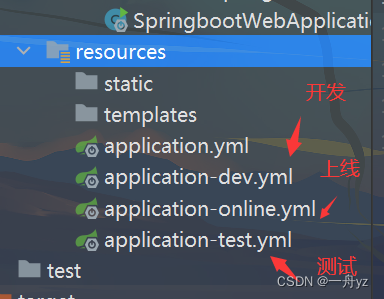
application.yml
#激活使用的test环境
spring:
profiles:
active: test
自定义配置
@value注解
@Value(“${key}”) , key 来自 application.properties(yml)
application.properties:添加两个自定义配置项 school.name 和 school.website。
server.port=9090
server.servlet.context-path=/myboot
school.name=hello
school.address=武汉
school.website=www.baidu.com
site=www.baidu.com
controller:
@Controller
public class HelloController {
@Value("${server.port}")
private String port;
@Value("${school.name}")
private String name;
@Value("${site}")
private String site;
@RequestMapping("/hello")
@ResponseBody
public String doHello(){
return "hello, port:" + port + "学校:"+name+",网站:"+site;
}
}

@ConfigurationProperties
将整个文件映射成一个对象,用于自定义配置项比较多的情况
prefix:配置文件中属性名的前缀
创建schoolinfo类:
@Component
@ConfigurationProperties(prefix = "school")
public class SchoolInfo {
private String name;
private String address;
private String website;
……
}
创建 SchoolController
@Controller
public class SchoolController {
@Resource
private SchoolInfo schoolInfo;
@RequestMapping("/myschool")
@ResponseBody
public String doSchool(){
return "学校信息:"+schoolInfo.toString();
}
}
注:在 SchoolInfo 类中使用了 ConfigurationProperties 注解,IDEA 会出现一个警告,不影响程序的 执行

点击 open documentnation 跳转到网页,将网页提示中要添加的依赖, 粘贴到 pom.xml 文件中:
<!--解决使用@ConfigurationProperties 注解出现警告问题-->
<dependency>
<groupId>org.springframework.boot</groupId>
<artifactId>spring-boot-configuration-processor</artifactId>
<optional>true</optional>
</dependency>
springboot中使用jsp
注:springboot不推荐使用jsp,需要配置才能使用!